 With NASA looking toward tomorrow morning's LCROSS impact of the Moon, we will begin our look back at Galileo's October 11, 1999 encounter with Io, which occurred 10 years ago Saturday night/Sunday morning. While this flyby didn't involve the kind of exciting impact that the LCROSS event will, this flyby provided scientists their first opportunity to image Io up close. Today we will look back at the planning that went into that flyby along with some of the data that influenced image targeting choices. Over the next few days, we will take a look at the images and other data acquired and the problems encountered during that flyby.
With NASA looking toward tomorrow morning's LCROSS impact of the Moon, we will begin our look back at Galileo's October 11, 1999 encounter with Io, which occurred 10 years ago Saturday night/Sunday morning. While this flyby didn't involve the kind of exciting impact that the LCROSS event will, this flyby provided scientists their first opportunity to image Io up close. Today we will look back at the planning that went into that flyby along with some of the data that influenced image targeting choices. Over the next few days, we will take a look at the images and other data acquired and the problems encountered during that flyby.Galileo's Mission Extended
The October 1999 flyby was not Galileo's first encounter with Io. Shortly before entering orbit around Jupiter on December 7, 1995, Galileo flew within 897 kilometers (557 miles). As originally planned, this encounter was to be the spacecraft's only flyby of Io as the intense radiation of the Io plasma torus was considered a major hazard for Galileo. You can watch a video of a simulation of this encounter that I uploaded to Youtube back in March. Unfortunately, in October 1995, a problem occurred in Galileo's tape recorder, which was to be used to store data recorded by the spacecraft's various instruments (and the Galileo Probe during its descent into Jupiter during the JOI event). The tape recorder became stuck after saving a color image of the Galileo probe entry site. While a workaround for this issue had been found by avoiding the area of the recorder with the Jupiter images, the additional decision to only use the recorder at low-speeds during the Io flyby, orbit insertion, and the Galileo probe atmospheric entry precluded the use of remote-sensing instruments during the Io encounter. The loss of Io imaging during I0 left researchers with a desire to return to Io, but Galileo wouldn't come much closer to Jupiter than Europa's orbit during the rest of the primary mission, which ended in December 1997.
While Galileo certainly wasn't without its problems, at the end of the primary mission, the spacecraft was deemed healthy enough for a two year-extended mission to be funded. The extended mission, also known as the Galileo Europa Mission, would focus on Europa to follow-up on the amazing discoveries from the primary mission. After eight flybys of Europa between December 1997 and February 1999, Galileo would then flyby Callisto four times in mid-1999 to lower the spacecraft's orbital perijove down to the orbit of Io. These Callisto encounters would help setup two encounters with Io in October and November 1999 (assuming the spacecraft was alive after the first flyby).
The Summer of '99
 Galileo used Callisto encounters between May and September 1999 as gravity assists to sling shot to spacecraft into orbits that brought it closer to Jupiter, into the Io Plasma Torus and within the orbit of Io. Such gravity assist maneuvers also allowed to spacecraft to approach closer to Io, not only during the two encounters in late 1999, but also during a non-targeted flyby on July 2, 1999. This encounter, at a distance of 127,000 kilometers (79,000 miles), provided an opportunity to image Io's anti-Jovian hemisphere at 1.3 kilometers (0.8 miles) per pixel. The resulting mosaic is shown at left. This hemisphere covers much of the same territory that would be seen by Galileo in sunlight during I24 and I25, allowing researchers to better plan remote-sensing observations during the Io flybys.
Galileo used Callisto encounters between May and September 1999 as gravity assists to sling shot to spacecraft into orbits that brought it closer to Jupiter, into the Io Plasma Torus and within the orbit of Io. Such gravity assist maneuvers also allowed to spacecraft to approach closer to Io, not only during the two encounters in late 1999, but also during a non-targeted flyby on July 2, 1999. This encounter, at a distance of 127,000 kilometers (79,000 miles), provided an opportunity to image Io's anti-Jovian hemisphere at 1.3 kilometers (0.8 miles) per pixel. The resulting mosaic is shown at left. This hemisphere covers much of the same territory that would be seen by Galileo in sunlight during I24 and I25, allowing researchers to better plan remote-sensing observations during the Io flybys. During the next two orbits (C21 and C22), Galileo also observed Io from a greater distance, searching for surface changes and active volcanic plumes. Again, like the global mosaic, these distant observations were designed to help Galileo scientists improve their science plan for the two flybys by potentially taking advantage of any major eruptions that might have been going on that summer. In the C21, a large, red ring was observed around the volcano Grian on Io's sub-Jupiter hemisphere, the result of an outburst eruption that started on June 22, 1999. The faint plume deposit had faded by the next perijove passage in mid-August. A similar new plume deposit was also found at Masubi. Unfortunately, like Grian, Masubi would be in the hemisphere opposite of what would be observed by Galileo up-close. The plume search imaging revealed volcanic plumes at Prometheus, Amirani, Masubi, and Grian.
During the next two orbits (C21 and C22), Galileo also observed Io from a greater distance, searching for surface changes and active volcanic plumes. Again, like the global mosaic, these distant observations were designed to help Galileo scientists improve their science plan for the two flybys by potentially taking advantage of any major eruptions that might have been going on that summer. In the C21, a large, red ring was observed around the volcano Grian on Io's sub-Jupiter hemisphere, the result of an outburst eruption that started on June 22, 1999. The faint plume deposit had faded by the next perijove passage in mid-August. A similar new plume deposit was also found at Masubi. Unfortunately, like Grian, Masubi would be in the hemisphere opposite of what would be observed by Galileo up-close. The plume search imaging revealed volcanic plumes at Prometheus, Amirani, Masubi, and Grian.Planning for an Encounter
 With the data from the prior extended mission orbits in hand, planning for the I24 encounter could begin in earnest. An ambitious imaging plan developed with sixteen mosaic observations consisting of 191 images total. In order to play all these images back in the month and a half between I24 and I25, nearly all of the images were acquired in summation mode (AI8), which shrank the images to 400x400 pixels in size, as opposed to 800x800 pixels for full-frame Galileo SSI images (IM4/IM8). The use of this mode would allow scientists to sacrifice spatial resolution for additional imaging and expanded coverage.
With the data from the prior extended mission orbits in hand, planning for the I24 encounter could begin in earnest. An ambitious imaging plan developed with sixteen mosaic observations consisting of 191 images total. In order to play all these images back in the month and a half between I24 and I25, nearly all of the images were acquired in summation mode (AI8), which shrank the images to 400x400 pixels in size, as opposed to 800x800 pixels for full-frame Galileo SSI images (IM4/IM8). The use of this mode would allow scientists to sacrifice spatial resolution for additional imaging and expanded coverage.Based on data acquired during Galileo's primary and extended missions, several primary science targets were to be examined during this encounter:
- Active volcanic centers. This included high-resolution imaging of the Prometheus, Zamama, and regional-scale imaging across the Amirani, Marduk, and Isum flow fields. Galileo's highest resolution imaging were to cover the Pillan flow field, emplaced during a major outburst eruption in 1997. Finally, Galileo SSI would image the Pele lava lake at high resolution while Pele was still on Io's nightside.
- Mountains. This included high-resolution imaging across Ot Mons in central Colchis Regio and regional imaging of Tohil Mons, Dorian Montes, Monan Mons, Hi'iaka Montes, and Gish Bar Mons.
- Paterae. Like imaging of Io's mountains, observations of Ionian paterae (essentially volcanic depressions) were focused along the terminator. This primarily consisted of regional scale imaging near the Amirani flow field and included Monan Patera and Gish Bar Patera.
- Context imaging. Unlike Cassini, Galileo had no wide-angle camera. In order to provide context for its higher resolution imaging (such as over Pillan and Ot Mons), Galileo would image several of these areas again at lower resolution to better understand how the geologic structures observed up-close fit in to their surroundings and to provide a bridge in resolution between the high resolution imaging and the global views acquired earlier in the mission.
- Stereo imaging. Several of the observations planned for the I24 flyby were designed to act as one part of a stereo observation that would be combined with a companion mosaic to be acquired during another encounter. This included a global mosaic at 1.45 kilometers (0.9 miles) per pixel covering the anti-Jupiter hemisphere (to be combined with the global mosaic from C21) and a six-frame mosaic covering Tohil Mons (to be combined with a similar mosaic during the February 2000 I27 flyby).
With planning completed and the sequences uploaded to Galileo, scientists could only wait and see if their observations were successful. In the next part of our series looking back at the I24 flyby, to be posted Sunday, we will take a look at the encounter itself and the issues that cropped up during the flyby. Later next week, we will then take a look at the data that came back following the flyby.

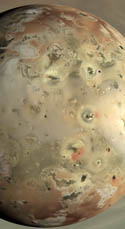



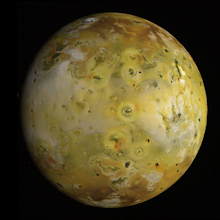

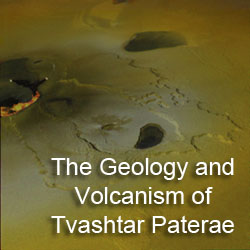
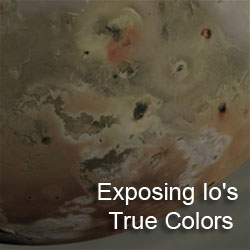
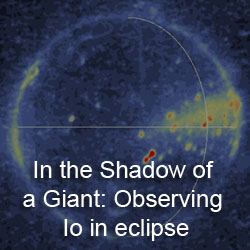
No comments:
Post a Comment